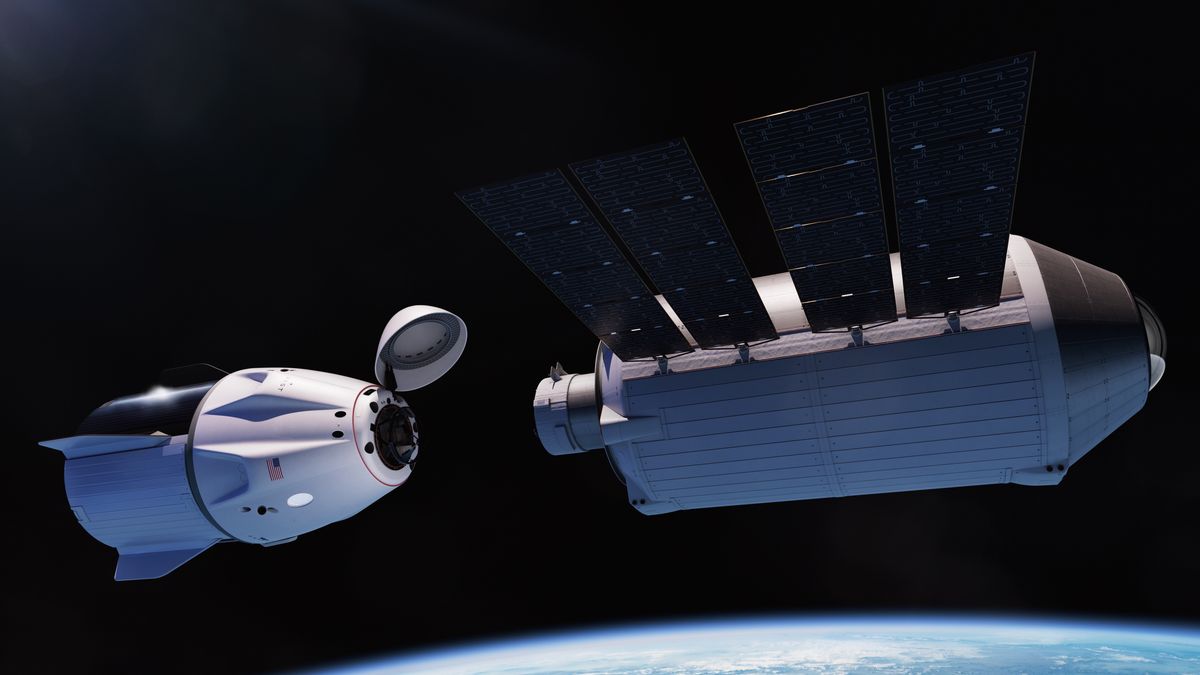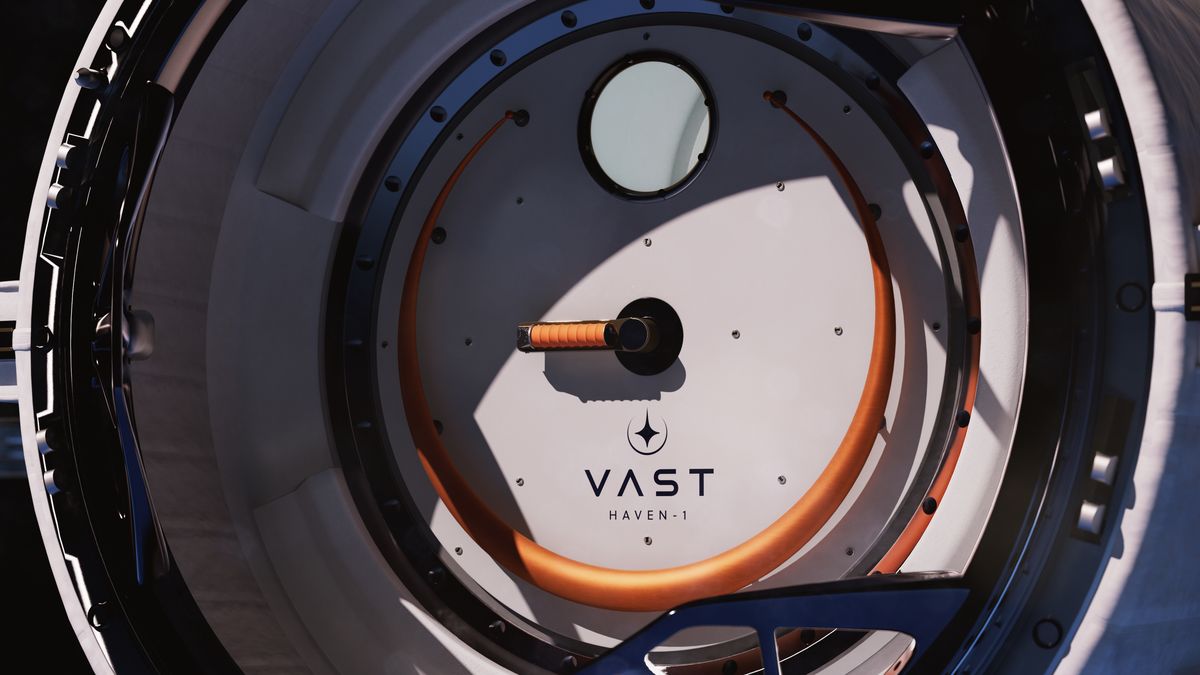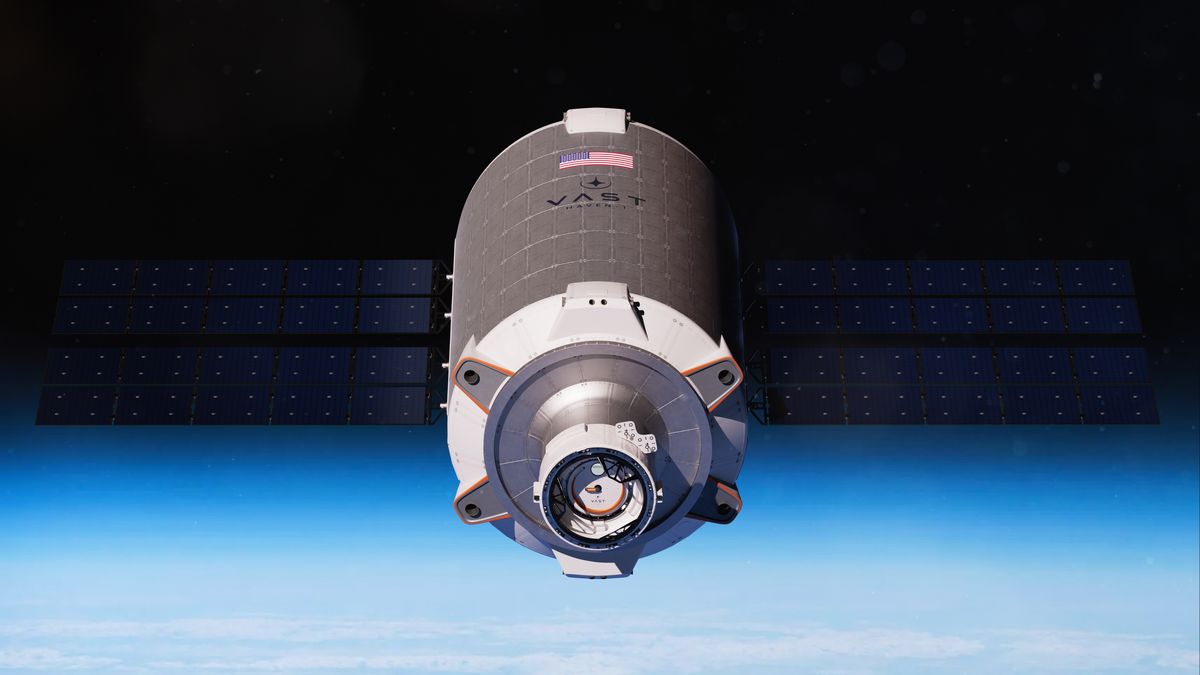In a recent announcement, the startup company Vast revealed its plans to launch the world's first commercial space station into orbit by August 2025. To achieve this goal, Vast has partnered with SpaceX, which will not only facilitate the launch but also provide the first human occupants of the space station via their Dragon crew capsule. This groundbreaking development in the field of artificial gravity space station technology is sure to capture the attention of the public and space enthusiasts alike.
Last year, Vast announced its ambitious plan to construct a modular artificial space station spanning 100 meters, complete with artificial gravity driven by rotational velocity. The company has now revealed that its inaugural station will be named Haven-1.
While the station is designed to function autonomously at first, it will eventually link up with additional Vast modules launched in the future to create a larger space station.

Image courtesy of Vast
With dimensions compact enough to allow it to be carried by a SpaceX Falcon 9 rocket, Haven-1 is capable of hosting a crew of up to four individuals at a time. The station has been fitted with a docking hatch tailored for use with Crew Dragon, and appears to be just over twice the height of SpaceX's human-rated spacecraft.
During its initial phase, Vast's single-module station, Haven-1, will primarily serve as a prolonged stay option for Dragon missions, providing a more spacious environment for up to four individuals to conduct scientific research, engage in in-space manufacturing, and simply stretch their legs during stays of up to 30 days in orbit. Additionally, the station will offer round-the-clock connectivity via onboard wifi, power, and consumables to ensure a comfortable experience for its guests.
Vast-1, the inaugural mission that will ferry the first four human occupants to the Haven-1 space station, is now open for booking. Vast is offering up to four seats on this mission to both space agencies and their professional astronauts, as well as private individuals interested in conducting scientific or philanthropic work. In addition, Vast has secured an option with SpaceX for a second mission, Vast-2, set to launch in 2026, the timing of which will probably depend on the level of demand.

Image courtesy of Vast
If Vast is able to meet its projected timeline, the Haven-1 space station will beat out other commercial space stations currently in development to become the first to achieve operational status. Competing projects, such as the private Starlab venture involving Nanoracks, Lockheed Martin, and Voyager Space, are aiming for a 2027 launch date, while Axiom plans to launch the first section of its orbital platform by "late 2025."
A busy season for SpaceX
At the start of this month, SpaceX's Falcon Heavy mission successfully delivered three payloads, including the ViaSat 3 Americas broadband communications satellite, the first of three next-generation geostationary satellites built by Boeing for ViaSat.
The mission also saw the farthest recovery and landing of fairings to date, with one fairing reentering the Earth's atmosphere at a record-breaking speed and distance. Although the boosters lacked sufficient fuel to return and land, the mission accomplished another milestone in SpaceX's goal of developing reusable rockets. SpaceX has already scheduled its next Falcon Heavy mission for later this month.
- Karlston and aum
-

 2
2




Recommended Comments
There are no comments to display.
Join the conversation
You can post now and register later. If you have an account, sign in now to post with your account.
Note: Your post will require moderator approval before it will be visible.